#Essex Chronicle
Explore tagged Tumblr posts
Text
Soundsuit, 2013, Nick Cave Peabody Essex Museum
1 note
·
View note
Text

Robert Wynn-Carington, Viscount Wendover by Philip de Laszlo 1911
Style note: out of the darkness into some colour
“Albert Edward Samuel Charles Robert Carington, known as Robert, was born on 24 April 1895, at 50 Grovesnor Street in London. He was the sixth child and only son of Charles Carington, then Baron Carrington, and his wife the Hon. Cecilia Margaret Harbord. A close friend of Robert’s father, the Prince of Wales, was his sponsor at his christening on 5 June 1895 at Wycombe Parish Church. On 16 July that year, Charles Carington was created 1st Earl Carrington, and Robert Viscount Wendover. He retained this title even after his father was created Marquess of Lincolnshire in 1912.
Wendover attended Eton College from 1908 until 1912. Following in his father’s footsteps, he joined the Royal Horse Guards and gained the rank of Lieutenant. It was as a subaltern, in the Charge of the Blues 10th Hussars and Essex Yeomanry, that he died from wounds received in action near Ypres on 13 May 1915. He died in hospital in Boulogne on 19 May, his parents at his bedside. On 27 May a Greek verse, In Memoriam, was published in The Eton College Chronicle. His parents repatriated his body for the funeral, which took place at Moulsoe, Buckinghamshire, with full military honours. He was buried in St Mary’s Churchyard, Moulsoe.
This portrait was painted in September 1911 in the dining room at Daws Hill, the Carringtons’ family home on the Wycombe Abbey Estate in Buckinghamshire. De László had painted the sitter’s sister Myee, Viscountess Bury, in July that year, which may have been a catalyst for this commission.
11 notes
·
View notes
Text
The Marriage of Henry of Lancaster and Mary de Bohun (1380/1)
From: Chronicles of England, France and Spain and the Surrounding Countries, by Sir John Froissart, Translated from the French Editions with Variations and Additions from Many Celebrated MSS, by Thomas Johnes, Esq; London: William Smith, 1848. *
Humphry, earl of Hereford and Northampton, and constable of England, was one of the greatest lords and landholders in that country; for it was said, and I, the author of this book, heard it when I resided in England, that his revenue was valued at fifty thousand nobles a-year. From this earl of Hereford there remained only two daughters as his heiresses; Blanche the eldest, and Isabella** her sister. The eldest was married to Thomas of Woodstock, earl of Buckingham. The youngest was unmarried, and the earl of Buckingham would willing have had her remain so, for then he would have enjoyed the whole of the earl of Hereford’s fortune. Upon his marriage with Eleanor, he went to reside at his handsome castle of Pleshy, in the county of Essex, thirty miles from London, which he possessed in right of his wife. He took on himself the tutelage of his sister-in-law, and had her instructed in doctrine; for it was his intention she should be professed a nun of the order of St. Clare***, which had a very rich and large convent in England. In this manner was she educated during the time the earl remained in England, before his expedition into France. She was also constantly attended by nuns from this convent, who tutored her in matters of religion, continually blaming the married state. The young lady seemed to incline to their doctrine, and thought not of marriage.
Duke John of Lancaster, being a prudent and wise man, foresaw the advantage of marrying his only son Henry, by his first wife Blanche, to the lady Mary: he was heir to all the possessions of the house of Lancaster in England, which were very considerable. The duke had for some time considered he could not choose a more desirable wife for his son than the lady who was intended for a nun, as her estates were very large, and her birth suitable to any rank; but he did not take any steps in the matter until his brother of Buckingham had set out on his expedition to France. When he had crossed the sea, the duke of Lancaster had the young lady conducted to Arundel castle; for the aunt of the two ladies was the sister of Richard, earl of Arundel, one of the most powerful barons of England.**** This lady Arundel, out of complaisance to the duke of Lancaster, and for the advancement of the young lady, went to Pleshy, where she remained with the countess of Buckingham and her sister for fifteen days. On her departure from Pleshy, she managed so well that she carried with her the lady Mary to Arundel, when the marriage was instantly consummated between her and Henry of Lancaster. During their union of twelve years, he had by her four handsome sons, Henry, Thomas, John and Humphrey, and two daughters, Blanche and Philippa. The earl of Buckingham, as I said, had not any inclination to laugh when he heard these tidings; for it would not be necessary to divide an inheritance which the considered wholly as his own, excepting the constableship which was continued to him. When he learnt that his brothers had all been concerned in this matter, he became melancholy, and never after loved the duke of Lancaster as he had hitherto done.^
Notes:
* Johnes notes that this is from "only one of [his] mss. [manuscripts] and not in any printed copy". Chris Given-Wilson (Henry IV, Yale University Press, 2016): "This story comes from a variant manuscript of Froissart's chronicles used by Johnes, but subsequently destroyed by fire."
** Johnes: "Froissart mistakes: their names were Eleanor and Mary." Presumably, Johnes then corrects their names for the rest of the narrative?
*** Jennifer C. Ward (translator and editor), Women of the English Nobility and Gentry: 1066-1500 (Manchester Medieval Sources, Manchester University Press, 1995): "This is probably a reference to the convent of the Minoresses outside Aldgate in London where Isabella, daughter of Thomas and Eleanor, later became a nun."
**** Ward: "Joan de Bohun, Mary’s mother, was the sister of Richard FitzAlan, earl of Arundel." Given-Wilson argues the role Froissart assigns to Mary's aunt was actually played by Joan.
^ The veracity of Froissart's account has tended to be questioned, with some historians generally concluding there was probably some truth, mostly revolving around the falling out between John of Gaunt and Thomas of Woodstock over the marriage. The secretive nature of it is almost certainly untrue, given Gaunt had received a royal grant for Mary's marriage. Given-Wilson:
Froissart claimed that ‘the marriage was instantly consummated’, but this was precipitate. He also got several other details of the story wrong, such as calling the two sisters Blanche and Isabel and saying that it was their ‘aunt’ who carried Mary away from Pleshey, but the essentials of his story are corroborated by other sources and undoubtedly correct. Countess Joan was complicit in the plot, presumably hoping to give her daughter a life outside the convent. She probably commissioned a pair of illuminated psalters for the marriage.
The psalters were probably made by the de Bohun-sponsored workshop at Pleshey, one of Woodstock's principle residences. It's possible, presumably, that Joan commissioned them after the wedding but if they were commissioned before/finished by the time of the wedding, it's hard to imagine that Woodstock's household were entirely unaware that a move was being made to marry Mary to Henry.
#mary de bohun#henry iv#jean froissart#joan de bohun countess of hereford#eleanor de bohun#thomas of woodstock#john of gaunt#primary source#froissart's chronicles
9 notes
·
View notes
Text
13 Books Tag Game
Was tagged by @disregardandfelicity Thank you! This is really getting me back into the spirit of reading. I needed this <3
1) The last book I read:
Coma by Alex Garland. I love him as a director, and I just recently found out he's also written some books. It was fun and mind-bendy, sort of reminded me of the stuff I try to write. Also really fast. I think I finished it in one or two hours.
2) A book I recommend:
Moving Forward Sideways Like a Crab by Shani Mootoo. I recently formed a little book club around this book because I just think it's so special. And almost no one has heard of it, which is such a shame! Everything this author writes is just stunning. Heartbreaking, guttural, sometimes disturbing, but always always stunning.
3) A book that I couldn’t put down:
Pillars of Light by Jane Johnson. Became one of my all-time favourites almost immediately, and I plowed right through it. I've been itching to read it again, actually. Oh, John the sad gay foundling, I miss reading from your pov...
4) A book I’ve read twice (or more):
For some reason I've read Room by Emma Donoghue twice. I wouldn't be able to stomach it now, but I guess it did something for me at the time. If anything, it's a fast read once you get used to the five year old's voice.
5) A book on my TBR:
So, soooo many... After the book I'm currently reading, I was hoping to pick up White Noise by Don DeLillo or Foe by Iain Reid.
6) A book I’ve put down:
Cloud Atlas, for now. Just sort of fell out of it by accident.
7) A book on my wish list:
And Then She Fell by Alicia Elliott. I've read her other book, A Mind Spread Out on the Ground, and I genuinely think it's one of those must-reads for any Canadian (or non-Canadian) interested in Indigenous lit.
8) A favorite book from childhood:
I was partial to The Spiderwick Chronicles. In earlier childhood, though, it was The BFG by Roald Dahl.
9) A book you would give to a friend:
The Solitude of Prime Numbers by Paolo Giordano. I know what you're thinking --- kind of a depressing book to give to a friend. And yes, it is depressing and very rough. But it opened something in my heart, idk. I felt comforted by it. I would also give a friend The Bonesetter's Daughter by Amy Tan. Basically, books that have made me cry and hug them after I finished them.
10) A book of poetry or lyrics that you own
Can't remember the titles off the top of my head, but I have some Neruda. My partner is the poetry reader.
11) A nonfiction book you own:
Oh, sooooo many. I used to only read non-fiction for the longest time. But I'll go with the one that makes me look the most pretentious: Gender Trouble by Judith Butler. Found in the special little book sale room at the library I work at.
12) What are you currently reading:
The Kite Runner, for the first time. It's as gorgeous and heartbreaking as promised.
13) What are you planning on reading next?
Essex Dogs by Dan Jones. I bought a copy last year, got a few chapters in, then gave it to my dad for Christmas because we're big Dan Jones fans and I couldn't find another copy anywhere. I waited months for my new copy, so I have to read it now!
Hmm, tagging @spacegirlsgang @raedear @captainshakespear @maddielle @polarcell @knoepfchen but no pressure ofc
#i can't remember which of y'all read a lot forgive me#this was really fun and made me want to read. i though i barely knew any books but i kept coming up with multiple answers
12 notes
·
View notes
Text
⚓Boat Media Lineup⚓
The Adventures of Tintin (movie, 2012)
Anaconda (movies, 1997-2009)
Assassin’s Creed IV: Black Flag (video game, 2013)
A True Story (book, 2nd century CE)
Battleship (movie, 2012)
Captain Blood (movie, 1935)
Captain Ron (movie, 1992)
Captains Courageous (book, 1897)
The Cruel Sea (movie, 1953)
Der fliegende Holländer (opera, 1843)
Ghost Ship (movie, 2002)
Going to Weather (webcomic, 2022)
The Iliad (poem, 8th century BCE)
I'm on a Boat (music video, 2008)
Jacky Faber Chronicles (books, 2002-2014)
Jason and the Argonauts (movie, 1963)
Jaws (movies, 1975-1987)
Just Roll With It: Riptide (podcast, 2021-)
Lake Placid (movies, 1999-2018)
The Mermaid, the Witch, and the Sea (book, 2020)
Montague Siblings Series (books, 2017-2021)
Mr Midshipman Easy (book, 1836)
Mutiny on the Bounty (movie, 1935)
Narrative of the Most Extraordinary and Distressing Shipwreck of the Whale-Ship Essex (book, 1821)
The Odyssey (poem, 8th century BCE)
One Piece (manga, 1997-)
Pan (movie, 2015)
Pirates Dinner Adventure (live show, 2010-)
The Poseidon Adventure (book & movies, 1969, 1972 & 2006)
Railsea (book, 2012)
Return of the Obra Dinn (video game, 2018)
The Rime of the Ancient Mariner (poem, 1798)
The Sea Beast (movie, 2022)
The Sea Hawk (book & movie, 1915 & 1924)
The Sea-Wolf (book, 1904)
Sea of Thieves (video game, 2018)
Ship of Theseus (thought experiment)
Skies of Arcadia (video game, 2000)
Spiritfarer (video game, 2020)
Swallows and Amazons (books, 1930-1947)
Three Men in a Boat (To Say Nothing of the Dog) (book, 1889)
The True Confessions of Charlotte Doyle (book, 1990)
Trysor Y Morladron (book, 1960)
Two Years Before the Mast (book, 1840)
The Unbinding of Mary Reade (book, 2018)
Under Enemy Colors (book, 2007)
Voyage of the Basset (book, 1996)
The Voyage of the Beagle (book, 1839)
The Voyage of the Dawn Treader (book, 1952)
The Whale (movie, 2013)
The Wind in the Willows (book, 1908)
World of Warships (video game, 2015)
#bmt2 info#there are too many here to tag...#this is in general alphabetical order btw not in seed order#long post
21 notes
·
View notes
Text
Reflections on 30 Years: The Ongoing Struggle to Define Blackness in America
by L. W. K. Catoe Jr.

On February 23, 2024, The Forum at Columbia University honored Black History Month with a free screening of the film Black Is... Black Ain't (1995), by Marlon Riggs. Black Is... Black Ain't explores the theme of Black identity through performances by choreographer Bill T. Jones, poet Essex Hemphill, and commentary from noted cultural critics Angela Davis, bell hooks, Dr. Cornel West, and others. The screening was followed by a conversation between the attendees and the event organizers, Columbia University Professor Jafari Allen and Novella Ford, Associate Director of the Schomburg Center for Research in Black Culture.
Riggs made Black Is… Black Ain’t as he was dying from AIDS. Death is a major theme throughout the film as it chronicles Riggs's illness and how his illness affected his life. In addition, Riggs speaks of his love for the church, his family, and his community and how all of those elements played a part in who he was as a person. But I was more specifically struck by how loved Riggs was. During the time this film was being made, AIDS was a stigma in many communities, and in many cases, victims of the disease were ostracized or shunned from their communities. However, Riggs was wrapped in love by all those around him and it was heartwarming to see.

The film complicates reductive notions of race through the history of Creole people, who would sometimes separate themselves from Blacks or “pass” based on the light color of their skin. Riggs himself was from the New Orleans community of Creoles. In the film, he explores the loose definition of the term creole, which in reality refers to various communities including those who passed for white, those who did not, and also Native Americans who lived and intermarried amongst Blacks.
In the discussion, an audience member pointed out how African Diasporic peoples have always found ways to share their stories, either through oral history and the figure of the Griot, or, in this case, by documenting their own lives. As moderator Novella Ford commented, these storytelling traditions work against “historical erasure”—when life goes undocumented, how can you prove that it happened? In this case, Riggs found a way by documenting his own experience, and he shows the ways in which his spirituality lifted him through this dark time of his life. But the tradition goes back to the beginnings of the history of the African Diaspora, which formed a strong connection to religion and culture, interconnecting religion with spirituality and leading Black people through their darkest periods. Black is... Black Ain't reflects on this history and shows how, despite the church vilifying AIDS due to its association with the LGTBQ community, the church still stood as the foundation of Riggs's strengths. Food was another source of strength for Riggs. In the film, you experience his joy of food, of Gumbo, of tradition, and of the memories of food in his life growing up.

Riggs does not portray himself as a victim. He expresses that being gay was never a regret in his life. This attitude transforms the stigma of being gay into a strength. It also raises the question of Black masculinity. Who are the gatekeepers of masculinity in the Black community, and how is this dynamic articulated geographically? At one point, an audience member questioned whether Riggs's experience as a gay Black man who was loved was based on where the film was located. But shooting took place nationwide, and at least 95% of the film was based outside of New York. Nevertheless, would the perspectives raised in the film have been different had the entire Black community in the United States been part of the conversation? By portraying Riggs’s personal history alongside the national Black community, the moderators suggested how the film reflected “linked fate,” an acute sense of awareness that what happens to the group will also affect the individual member.

During the conversation following the film, an audience member pointed out how the Black community traditionally gathers during birth and death. Both events mark milestones within the community, and the film remains true to the cultural celebration of the emergence of life and of the passing of lives lived. The film felt like a baptism, or as if Riggs were taking communion and self-cleansing, returning to the purity of birth. At the same time that it is a beginning, it is also an ending. Riggs is witness to the obituary that he is writing for himself, coming to terms with his life and accepting his death. Some of the most striking scenes were shot in the Louisiana Bayou, a return to Riggs’s origins. At the end of the film, Riggs runs naked through the swamp in New Orleans, calling to mind the innocence of birth, a time when nudity is void of any feelings of guilt or shame; and, instead, natural and next to God.

Levi Wise Kenneth Catoe Jr.
Editor, BOSS, NYC
0 notes
Text
Gianfranco Poggi (1934-2023)
By Stephen Harold Riggins
Sociology at Memorial University in the early 1970s had a rather lowly and insecure status. It had been taught at the St. John’s campus since 1956 by a handful of instructors who were young except for retirement-age Nels Anderson, author of the Chicago-School classic The Hobo: The Sociology of the Homeless Man. Consequently, an effort was made to bolster the MUN department by hiring a senior sociologist. That effort failed.

Professor Gianfranco Poggi.
The next strategy was so successful that it gave the department an aura among Canadian sociology departments that lasted until the early 1990s. The solution was appointing Visiting Professors. Since the department’s Ph.D. program did not exist then, offering local graduate students short-term teaching contracts was not an option. Department heads at Memorial had the power to make short-term appointments and could hire per-term instructors primarily on the basis of their CVs. To my knowledge, Peter Baehr, formerly of Lingnan University of Hong Kong; and Michael Gardiner, now at Western University of London, Ontario, were the last scholars who benefitted from the department’s commitment to appointing Visiting Professors.
These Visiting Professors, some of whom taught at MUN on two or three occasions, had degrees from prestigious universities: University of Florence, Brandeis University, State University of New York at Buffalo, University of Leicester, University of Warsaw, University of California at Berkeley, University of Essex, University of Bristol, Mining Institute of Leningrad, and the University of Toronto. Most Visiting Professors were relatively young and only later established excellent publication records. The best-known visitor was Zygmunt Bauman. He was retired when he came to MUN but was not yet a celebrity.
“What made the MUN department exciting,” Volker Meja told me, “was the people passing through. At large universities such visits happen naturally. Due to the location of St. John’s we had to make a special effort to attract prominent scholars. This really worked for over ten years. It drew people together intellectually.”
Gianfranco Poggi was one of the visitors. Meja met Poggi at the World Congress of Sociology in Madrid in the summer of 1978. He invited Poggi to give a lecture or seminar in St. John’s at a time of his choosing. It was then common for sociologists and anthropologists to give public presentations in the Great Hall at Queen’s College, the building where the department was located. Poggi was overcommitted when first invited, but did teach at MUN in the summers of 1980 and 1982 as well as the autumn of 1983. Poggi was an authority on sociological theory, especially the classics of the 19th and early-20th centuries; the development of the modern state; and political power. If you have never read Poggi, a good place to start might be his little book Weber: A Short Introduction or the book co-authored with Giuseppe Sciortino Great Minds: Encounters with Social Theory.
Poggi (1984) wrote a memoir about his early experiences, which he titled “The Wopscot Chronicle: Reflections of a Half-baked Sociologist.” The title is a pun on The Wapshot Chronicle, a novel by John Cheever. “Wop” is an insulting slang term for Italian; Poggi was then living in Scotland. He was born in spectacularly beautiful Modena, Italy. It should not be a surprise that his first degree was in law when his father was a judge and in the 1950s sociology had not yet been reestablished in Italy following the catastrophe of Fascism. Poggi was attracted by what he learned about American society at the U.S. Information Service library in Bologna. Browsing among the sociology books in this library, he began to form an idea of sociology as a discipline. Sociology seemed like a distinctly American subject, which also made it appealing to him. When he applied for graduate school in the US in 1956, he still knew little about the discipline. The University of California at Berkeley was not his first choice. Some bureaucrat decided to send him there. After a while, he realized that he had been very lucky. His dissertation, published by Stanford University Press, was about social activism by Italian Catholics.
Poggi’s first full-time teaching position was at the University of Edinburgh where he remained for 24 years but during those years often taught on short-term contracts in North America and Australia. Beginning in 1988, he taught for several years at the University of Virginia before returning to Italy where he was affiliated with the European University Institute in Fiesole and the University of Trento. It could be argued that Poggi’s research contributed to the revival of sociology in Italy after World War II, although he adamantly downplayed his role in this development.
“I am reminded of [David] Riesman’s remark,” Poggi wrote, “that there are two kinds of sociologists, those interested in sociology and those interested in society. My problem is that I would like to be one of the latter, but if I am any good at all it is as one of the former. …I am not a natural sociologist, a shrewd observer and interpreter of social facts-on-the ground. …[I prefer] instead to think of another writing project which I can handle by reading other people’s books” (The Wopscot Chronicle).
A letter to Meja (September 17, 1980) also gives some insight into his status among well-known professional sociologists and into his personality. He had recently contacted Daniel Bell, author of The End of Ideology and The Cultural Contradictions of Capitalism. “He received me in his home and said he could only give me twenty minutes because his eye was bothering him – but then kept me there for nearly two hours, talking (quite entertainingly, I must say) almost all the time.” Poggi also mentioned that he had chats with German sociologist Niklas Luhmann. Poggi’s presentation at the 1980 annual meeting of the American Sociological Association was “quite well received” even by the “Redoubtable Niklas himself.” Poggi certainly name drops in his letters, and indeed the references are to well-established sociologists, but he does this in a way which is not offensive.
In another letter to Meja (January 2, 1986), Poggi expressed interest in returning to MUN for a fourth visit and writing for a sustained period of time with Victor Zaslavsky. Poggi’s daughter, Maria Johnson, professor of religious studies at the University of Scranton, confirmed to me that her father enjoyed living in Newfoundland. Perhaps it is not insignificant to mention that he displayed Volker Meja’s photographs of Newfoundland icebergs in the family’s Edinburgh home.
Scottish sociologist David McCrone, who taught as a Visiting Professor at MUN, wrote in Scottish Affairs (vol. 32, no. 4) that Poggi was an intellectual tour de force with Italian boyish charm. Giuseppe Sciortino, in his obituary for Poggi in the magazine il Mulino (The Mill) commented: “His intellectual output is also a magnificent example of passion without pettiness. …If he continued to deal with other authors forgotten by many, it was not out of inertia. They were thoughtful choices, which did not need controversy and tactical positioning to be taken calmly and communicated transparently.”
Major Publications by Gianfranco Poggi
Poggi, Gianfranco (1967) Catholic Action in Italy: The Sociology of a Sponsored Organization.Stanford, CA: Stanford University Press.
-- (1972) Images of Society: Essays on the Sociological Theories of Tocqueville, Marx and Durkheim. Stanford, CA: Stanford University Press.
-- (1978) The Development of the Modern State: A Sociological Introduction. London: Hutchinson.
-- (1983) Calvinism and the Capitalist Spirit: Max Weber’s Protestant Ethic. Amherst, MA: University of Massachusetts Press.
-- (1990) The State: Its Nature, Development, and Prospects. Stanford, CA: Stanford University Press.
-- (1993) Money and the Modern Mind: Georg Simmel’s Philosophy of Money. Berkeley, CA: University of California Press.
-- (2000) Durkheim. Oxford, UK: Oxford University Press.
-- (2001) Forms of Power. Cambridge, UK: Polity Press.
-- (2003) “Tom Burns 1913-2001,” Proceedings of the
British Academy, 120, 43-62.
-- (2006) Weber: A Short Introduction. Cambridge, UK:
Polity Press.
-- (2014) Varieties of Political Experience; Power Phenomena in Modern Society. Colchester, UK: ECPR Press.
Gianfranco Poggi and Giuseppe Sciortino (2011) Great Minds: Encounters with Social Theory. Stanford, CA: University of Stanford Press.
0 notes
Text
November 20th - Unveiling the Chronicles of Time!
On November 20th: 1820 An 80-Ton Sperm Whale Attacks the Whaleship Essex The real-life event that inspired Herman Melville’s “Moby-Dick” occurred on November 20th, 1820, when the whaleship Essex was attacked and sunk by an 80-ton sperm whale in the South Pacific. This harrowing tale of survival is etched in maritime history. 1947 Princess Elizabeth Marries Philip Mountbatten On this…

View On WordPress
0 notes
Text
What's Out This Week? 9/13
Thanks to everyone that came out for our SPX Party!
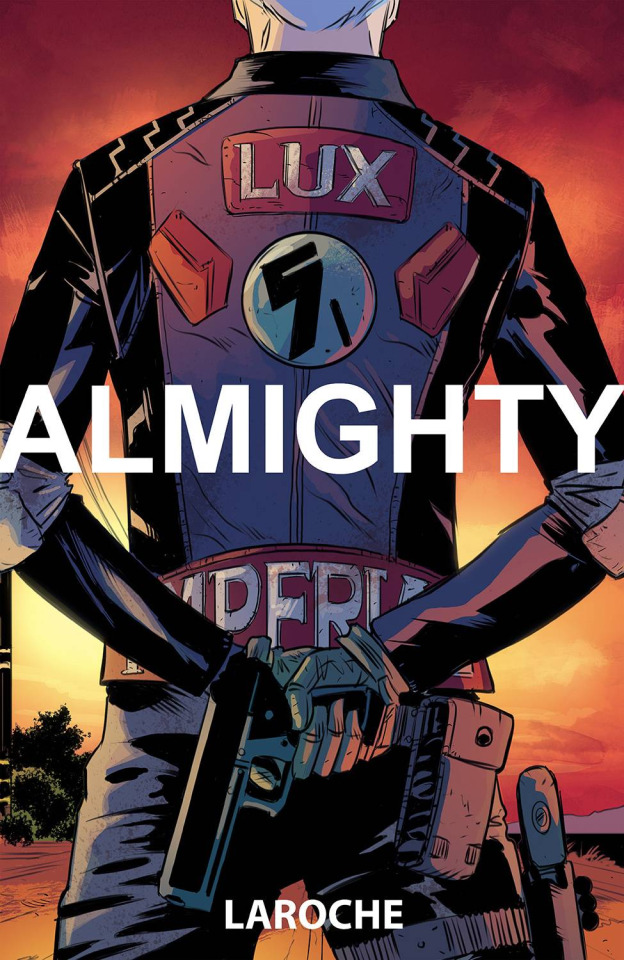
Almighty TP - Edward Laroche
The year is 2098 in a THIRD WORLD AMERICA ravaged by economic collapse, environmental disaster, and internal conflict. Del, a young volunteer working triage at a field hospital, is abducted by a ruthless motorcycle gang. Her only hope is FALE, an ex-military private contractor hired to find and bring her home. ALMIGHTY is white-knuckle thrill ride that will have fans of the genre begging for more.

Black Cloak TP - Kelly Thompson & Meredith McClaren
Essex and Pax are two Black Cloaks investigating the murder of a beloved prince of Kiros, the last city in the known world, before it topples into chaos. Mayhem. Murder. Mermaids. What more could anyone want?

Bloodborne: The Bleak Dominion #1 - Cullen Bunn, Piotr Kowalski & Werther Dell'Edera
In the plagued city of Yharnam, hunters Gretchen and Abraham search for their missing protégé. Under the blood moon, a scourge of beasts stalk the streets, and a new threat lurks around every corner. The duo must venture deep into the depths of the chalice dungeons in order to find Lucien, but malignant and ancient horrors await them. Will they find him? And what terrifying surprise awaits them if they do?

Club Kickout: Into The Ring! Vol 1 - Steph Mided
When the school principal cancels Sasha's gaming club, she's devastated-but not alone. Turns out theater, cosplay, and choir clubs are canceled too, and tons of kids are left without a space to let their creativity shine. Just when Sasha thinks all hope is lost, a class project leads her and her new friends somewhere they never expected-a local wrestling match-where costumes, secret identities, and catchphrases abound. It's there an idea is formed. Enter Club Kick Out. But not everyone is on board with this flashy new club, so when Sasha and her friends take their performances too far, trouble starts brewing. With friendships on the ropes and an unexpected injury in the ring, it looks like the end for these up-and-coming performers. Can Sasha and her friends reconcile and come together in time for Club Kick Out to give the school a match they'll never forget, or is this young club officially down for the count?

Coda #1 (of 5) - Simon Spurrier & Matias Bergara
In this brand new adventure in the Eisner Award-Nominated apocalyptic fantasy world of Coda, the despondent bard Hum finds a slice of tranquility with his wife, the Urken named Serka, in an ever-darkening, magic-less apocalypse - or so it seems.
Prophecies of paradise and the return of magic? Hum is skeptical, while Serka faces difficult moral decisions on the road, with winter quickly approaching...

Unsupervised GN - Tauhid Bondia
Unsupervised is the second book of Crabgrass, a comic strip set in the fictional town of Crabgrass Drive, and chronicles the close friendship of Kevin, who is white, and Miles, who is black, and the many stumbles and breakthroughs they encounter growing up together. The main characters exemplify the resilience of the bonds we form when we are young, and are a reminder of why we remember those times fondly. Crabgrass is also a thrilling exploration of the adventures and mischief that children can get into when allowed to roam. Set in an ambiguous time before cellphones and the internet, the strip finds a way to connect to the old and the young without alienating either.

Creepshow Vol 2 #1 (of 5) - Garth Ennis, Phil Hester, Becky Cloonan, & Guillem March
The smash-hit horror anthology based on the hit Shudder TV series is back and CREEPIER than ever!
In the debut issue, master of the macabre GARTH ENNIS (Preacher, The Boys) and superstar creator BECKY CLOONAN (Wonder Woman) team up for the very first time to deliver a disturbing tale of the unborn! Then, freaky PHIL HESTER (Gotham City: Year One) tells the story of a grieving son who bends the laws of nature to see his mother one last time this can't end well!

Do-Over Damsel Sets To Conquer The Emperor GN Vol 1 - Sarasa Nagase, Anko Yuzu & Mitsuya Fuji
Although Jill's engagement to the Crown Prince should have guaranteed her a happy life, she is instead sentenced to death by her very fiancé! However, moments before her death, she is sent back in time to the party that determined her fate. In a desperate bid to avoid her doom, she proposes to the man behind her, but that man turns out to be none other than an enemy from a neighboring country, the Dragon Emperor, Hades!

Drawn To Change The World GN - Emma Reynolds
An illustrated middle grade nonfiction graphic novel anthology by #KidLit4Climate founder and UK author-illustrator Emma Reynolds. The book features profiles of sixteen different diverse youth climate activists who have been campaigning for change all over the world, and each profile is illustrated by a different illustrator, with extensive front matter and back matter materials.
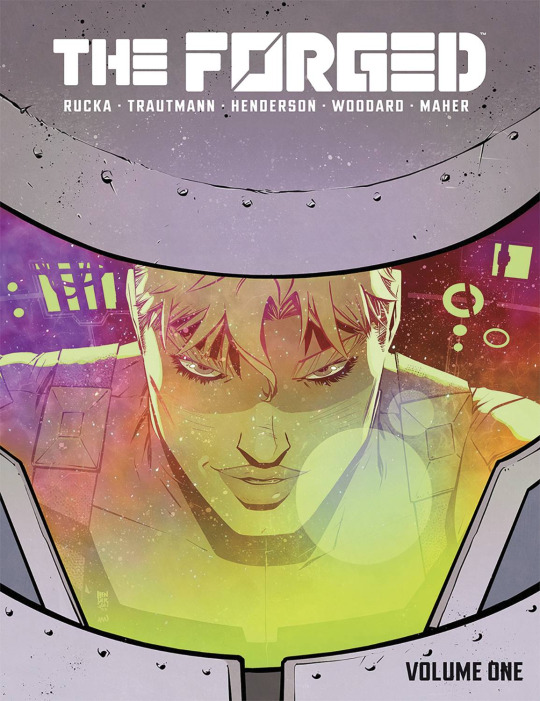
Forged TP Vol 1 - Greg Rucka, Eric Trautmann & Mike Henderson
Meet the Forged, elite warriors in service to the Eternal Empress. It's a routine recovery op on a distant world. What could possibly go wrong? Spoiler: Just about everything!
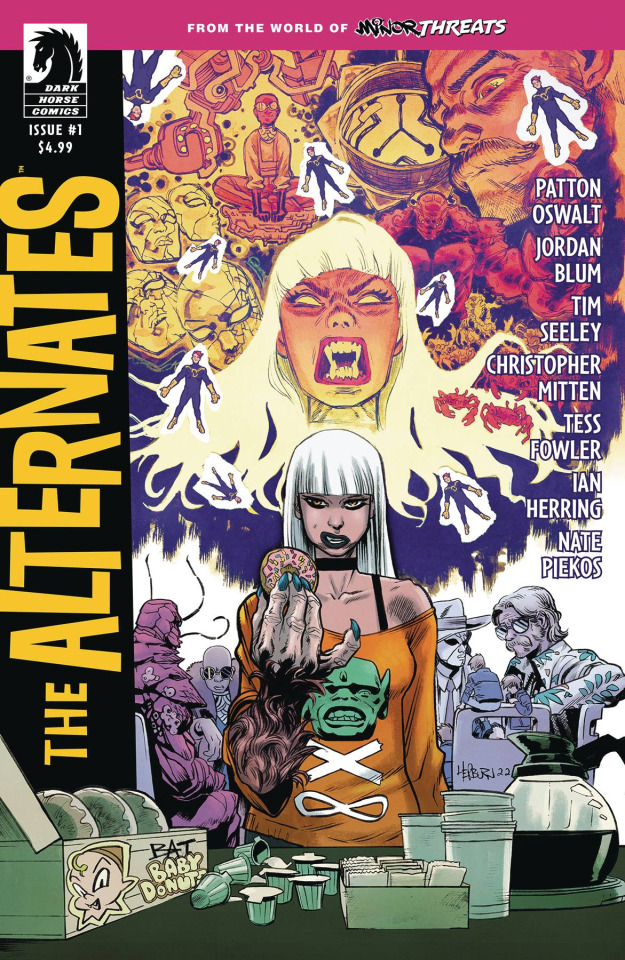
The Alternates #1 - Patton Oswalt, Christopher Mitten & Scott Hepburn
Mary the Multi-Monster! The Tripper! Crab Louie! Kid Curious! Persona! Formerly the offbeat b-list superheroes, The Alternates, who seemingly sacrificed themselves to stop an invasion from another dimension. Instead they were transported to a mirror reality where they lived complex lives in a more four-dimensional existence-expanding both their powers and consciousness. Five years later they've returned to Twilight City, struggling to reacclimate to their old lives in a traditional two-dimensional superhero world withdrawal from the vivid ones they left behind. When elements from this alternate reality turn up as a dangerous new street drug, some of the heroes band together to destroy it, while others succumb to its temptation.
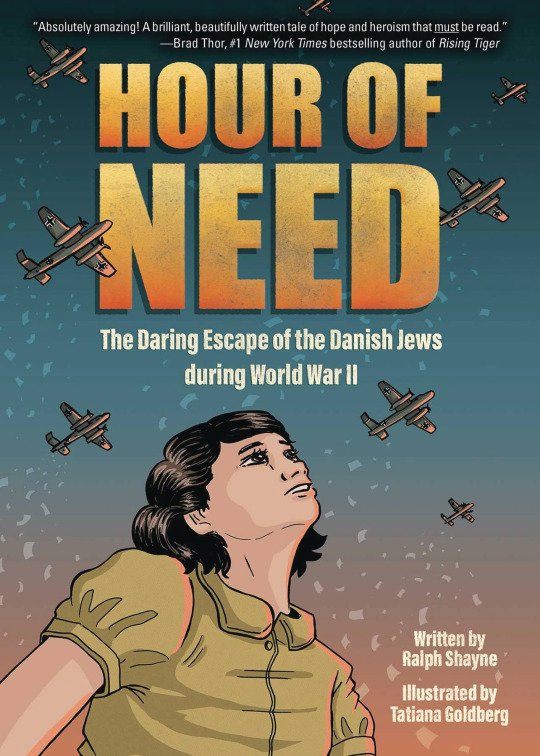
Hour Of Need GN - Ralph Shayne & Tatiana Goldberg
In the Hans Christian Anderson fairy tale, legend had it that should danger ever come to Denmark, the mighty warrior Holger Danske promised to wake from his centuries-long slumber to protect its citizens. When the Nazis move to round up young Mette and her fellow Danish Jews in a surprise raid in 1943 after years of letting Denmark rule its people, her father must make life and death decisions to save his family. Overnight, they have become refugees at the mercy of the complete strangers they meet during their escape. The mythical Holger Danske's promise to the Danish people manifests in the compassion and bravery of a school teacher turned resistance leader and other ordinary citizens who bravely defy the Nazi regime to come to her rescue in her hour of need.
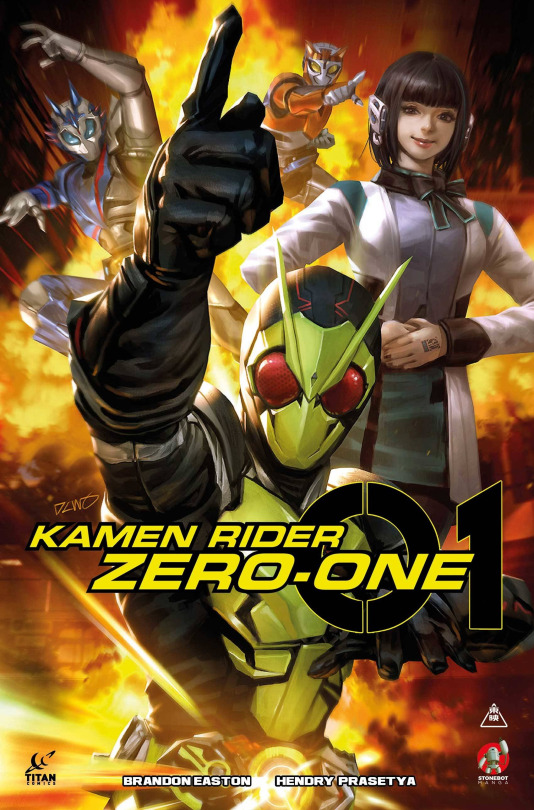
Kamen Rider Zero-One GN Vol 1 - Brandon Easton, Hendry Prasetya & Derrick Chew
The further adventures of the new Tokusatsu TV show Kamen Rider Zero-One! Features a brand-new villain, RAGNAROK, created exclusively for this collection!
Arturo Hiden is KAMEN RIDER ZERO-ONE! Along with his trusty humagear companion Izu, he's saved the world numerous times as the insectile superhero! But when his company HIDEN INTELLIGENCE is attacked by the mysterious RAGNAROK, Arturo must not only face the volcanic cluster cell-powered villain but also his own past...
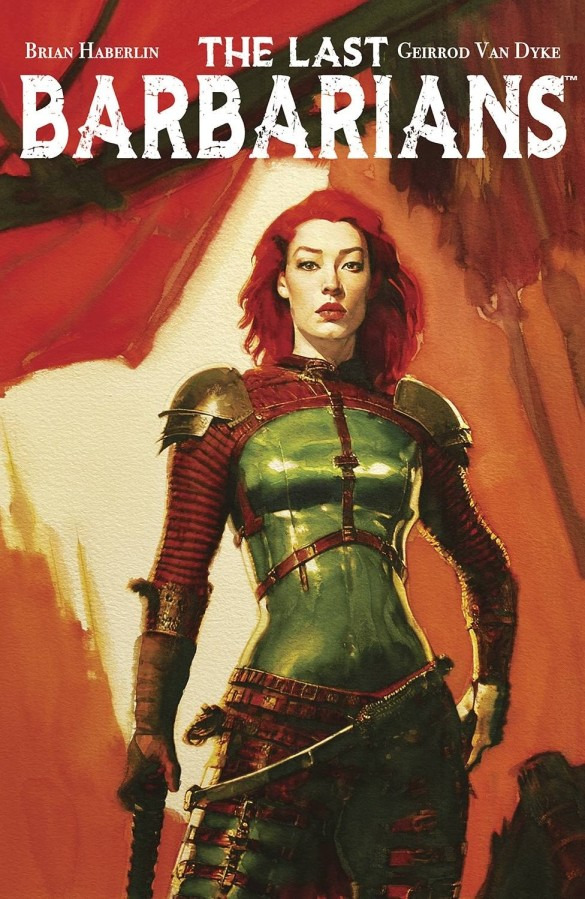
The Last Barbarians TP Vol 1 - Brian Haberlin & Geirrod Van Dyke
In a world where your guild means everything, classless Sylv is labeled a Barbarian. She's a jack of all trades who can fight, pick most pockets, and cast a spell or two. But without official membership to a guild, she's barred from having adventures. No adventures means no money, and no money makes it awfully hard to support herself and her 7-foot-tall disabled brother. But when an underhanded cleric says he's got the quest of a lifetime for her, she can't really say no (even if she knows she should). It'll take every skill she's got to stay alive, save a child, prevent the fabric of the universe from being ripped apart, and prove that being multiskilled isn't totally barbaric.
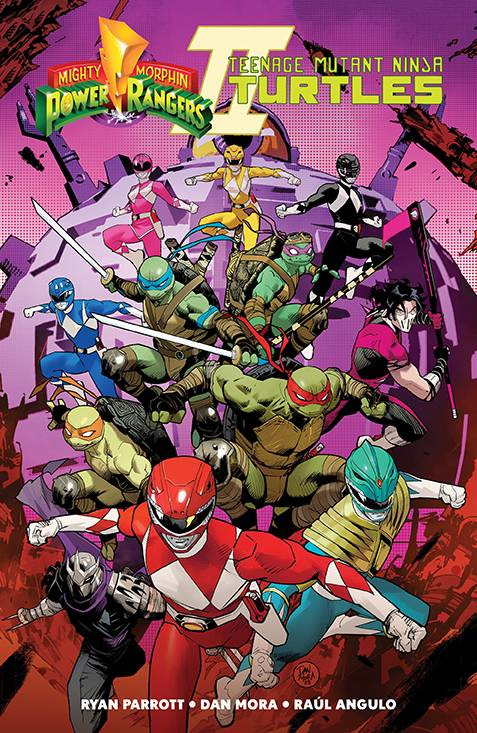
MMPR TNMT II TP - Ryan Parrott & Dan Mora
Six months after the Teenagers With Attitude and the Heroes In A Half Shell teamed up to defeat the unholy alliance of Rita Repulsa and Shredder, a new threat forces them to reunite!
Unlikely alliances and unlikely sanctuaries abound as the Rangers and Turtles put their heads together and create a secret weapon... but it might change them in ways they can't come back from!
Forbidden alliances collide as radically enhanced, mind blowing Zord combinations battle it out, and reunited friends face Krang as a true force to be reckoned with-but will it be enough to send him back to Dimension X?
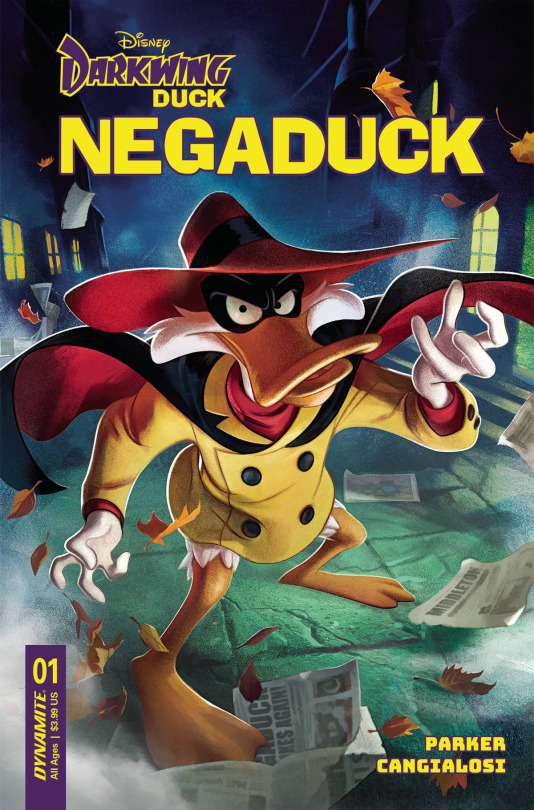
Darkwing Duck: Negaduck #1 - Jeff Parker, Ciro Cangialosi & Joshua Middleton
"I am the screeching fingernail on the chalkboard of justice. I am the sour ball in the candy jar of goodness. I am NEGADUCK!"
He's the exact opposite of DD in every way... evil, nefarious, dedicated to stealing lollipops from kids and not helping grandmas across the street! And now, he's ready to begin a reign of crime and terror the likes of which St. Canard has never seen - except... dang it, all of the other villains are ripping off his ideas! What's a criminal mastermind to do when the city's thick with other criminals, stealing his shine? Why, take his villainy on the road, of course!

Old-Fashioned Cupcake GN - Sagan Sagan
Thirty-nine-year-old Nozue went from living a routine, melancholic life of sleep and work to spending his days in bliss with Togawa, his younger subordinate. Now six months into their relationship, the two have graduated from dates at a pancake shop to spending their nights together, but when a coworker spots Togawa wearing one of Nozue's ties to work, it sends Nozue spiraling into doubt about the feasibility of their relationship.
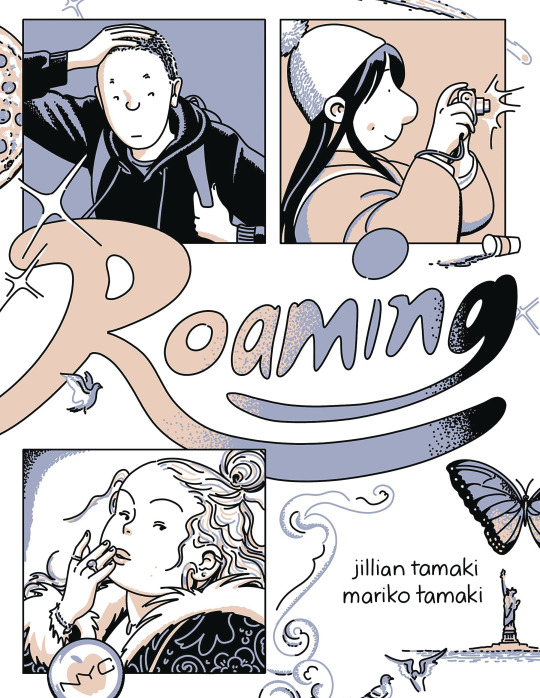
Roaming GN - Jillian Tamaki & Mariko Tamaki
Over the course of a much-anticipated trip to New York, an unexpected fling blossoms between casual acquaintances and throws a long-term friendship off-balance. Slick attention to the details of a bustling, intimidating metropolis are softened with a palette of muted pastels, as though seen through the eyes of first-time travelers. The awe, wonder, and occasional stumble along the way come to life with stunning accuracy.

Star Wars The Mandalorian The Manga GN Vol 1 - Yusuke Osawa
Years after the fall of the Galactic Empire, a solitary bounty hunter is given a simple mission. Find and return The Child to the remnants of the Imperial Forces. This mysterious orphan has a power that can possibly turn events in their favor, and acquisition of that power is paramount. Instead, the bounty hunter goes on the run with The Child to protect him from the forces that would do him harm. Here is the story of The Mandalorian, and his desperate quest to save The Child and himself.

Torrent TP - Marc Guggenheim, Justin Greenwood & Rico Renzi
Michelle Metcalf is CRACKERJACK, the world's most happy-go-lucky hero, until tragedy forces her to cross the line from hero to vigilante, setting off a never-ending battle that pits her against the world's most vile criminals and THE PRAETORIANS, its greatest heroes.
Whatcha checking out this week, Fantom Fam?
0 notes
Text
Utilidade pública!
Lista de todos os filmes/séries em que Sean Bean morre:
1- CARAVAGGIO (1986) - Corte na garganta
2- WAR REQUIEM (1989) - Baioneta
3- LORNA DOONE (1990) - Afogado
4- THE FIELD (1990) - Empurrado por vacas
5- CLARISSA (1991) - Esfaqueado
6- PATRIOT GAMES (1992) - Impalado
7- SCARLETT (1994) - Esfaqueado
8- GOLDENEYE (1995) - Jogado de antena
9- AIRBORNE (1998) - Baleado
10- ESSEX BOYS (2000) - Baleado
11- DON'T SAY A WORD (2001) - Enterrado
12- FELLOWSHIP OF THE RING (2001) - Flechas
13- EQUILIBRIUM (2002) - Baleado
14- HENRY VIII (2003) - Forca
15- THE ISLAND (2005) - Gancho + Forca
16- FAR NORTH (2007) - Hipotermia
17- OUTLAW (2007) - Baleado
18- THE HITCHER (2007) - Baleado
19- RED RIDING (2008) - Baleado
20- BLACK DEATH (2010) - Esquartejado
21- DEATH RACE 2 (2010) - Baleado
22- CASH (2010) - Baleado
23- GAME OF THRONES (2011) - Decapitado
24- AGE OF HEROES (2011) - Baleado
25*- SILENT HILL REVELATION (2012) - Cortado em dois, mas era um sonho. Ele sobrevive no filme.
26- WICKED BLOOD (2014) - Baleado + Explosão
27*- THE FRANKENSTEIN CHRONICLES (2015) - Forca, mas ele é ressuscitado.
28 - KINGSGLAIVE: FINAL FANTASY XV (2016) - Esfaqueado
29- DARK RIVER (2017) - Doença
30- MEDICI (2018) - Forca
31- CURFEW: EPISODE 3 (2019) - Baleado
32*- SNOWPIERCER (2022) - Baleado, mas num sonho. Ele sobrevive
0 notes
Text
From Aladdin to Philanthropy: The Inspiring Journey of Naomi Scott
Naomi Scott is a British actress and singer who gained international recognition for her role as Princess Jasmine in Disney's live-action adaptation of "Aladdin" (2019). Born on May 6, 1993, in London, England, Naomi has established herself as a prominent figure in the entertainment industry with her talent and hard work. In this SEO-friendly autobiography, we will delve into Naomi Scott's life, career, and achievements, highlighting her personal and professional milestones. Table of Contents: - Early Life and Education - Career Beginnings - Rise to Fame with "Aladdin" - Other Acting Projects - Music Career - Personal Life - Awards and Achievements - Frequently Asked Questions Early Life and Education Naomi Scott was born in London to her British father, Christopher Scott, and her mother, Usha Joshi, who is of Indian descent. She grew up in a multicultural household and was exposed to both British and Indian culture. Naomi attended Davenant Foundation School in Loughton, Essex, and later went to University College London to study English literature and language. During her college years, she also pursued her passion for music and began writing songs. Career Beginnings Naomi Scott's acting career began in 2008 when she appeared in the Disney Channel UK series "Life Bites" as the character Megan. She then went on to play minor roles in TV series such as "Terra Nova" and "By Any Means" before landing a leading role in the British sci-fi drama "The Martian Chronicles" in 2015. Rise to Fame with "Aladdin" In 2019, Naomi Scott was cast as Princess Jasmine in Disney's live-action adaptation of "Aladdin," which became a box office success, grossing over $1 billion worldwide. Her performance was highly praised, and she was praised for her portrayal of a strong and independent female character. The film's soundtrack also featured a new song, "Speechless," performed by Naomi, which became a hit. Other Acting Projects: After "Aladdin," Naomi Scott landed a leading role in the action-thriller film "Charlie's Angels" (2019), alongside Kristen Stewart and Ella Balinska. She also appeared in the Netflix science fiction film "The Sleepover" (2020) and starred in the Apple TV+ series "Physical" (2021). Music Career Aside from her acting career, Naomi Scott is also a singer-songwriter. She released her first EP, "Invisible Division," in 2014, and has since released several singles. In 2019, she contributed to the soundtrack of "Aladdin" with her rendition of "Speechless," which reached the top 40 of the Billboard Hot 100 chart. Personal Life Naomi Scott married English footballer Jordan Spence in June 2014. The couple has kept their relationship private, but they have been spotted together at various events. Naomi is also known for her philanthropic work and has supported various charities such as the Teenage Cancer Trust, the Nelson Mandela Children's Fund, and the United Nations Foundation's Girl Up campaign. Awards and Achievements Naomi Scott has received several accolades throughout her career. In 2019, she was named one of Time magazine's 100 most influential people in the world. She also won the Teen Choice Award for Choice Sci-Fi/Fantasy Movie Actress for her role in "Aladdin" and was nominated for the MTV Movie Award for Best Breakthrough Performance. FAQs: Q: What is Naomi Scott's most famous role? A: Naomi Scott's most famous role is that of Princess Jasmine in Disney's live-action adaptation of "Aladdin" (2019). Q: What other movies has Naomi Scott starred in? A: Naomi Scott has also starred in "Charlie's Angels" (2019), "The Sleepover" (2020), and the Apple TV+ series "Physical" (2021). Q: Does Naomi Scott have a music career? A: Yes, Naomi Scott is also a singer-songwriter and has released several singles. She contributed to the soundtrack of "Aladdin" with her hit song "Speechless." Q: Who is Naomi Scott married to? A: Naomi Scott is married to English footballer Jordan Spence. Q: What charities does Naomi Scott support? A: Naomi Scott has supported various charities such as the Teenage Cancer Trust, the Nelson Mandela Children's Fund, and the United Nations Foundation's Girl Up campaign. In conclusion, Naomi Scott's talent, hard work, and dedication have made her a prominent figure in the entertainment industry. From her multicultural upbringing to her rise to fame with "Aladdin" and her successful music career, Naomi has achieved numerous milestones in both her personal and professional life. With her philanthropic work and influential presence, Naomi Scott continues to inspire and make a positive impact in the world. Read the full article
0 notes
Photo
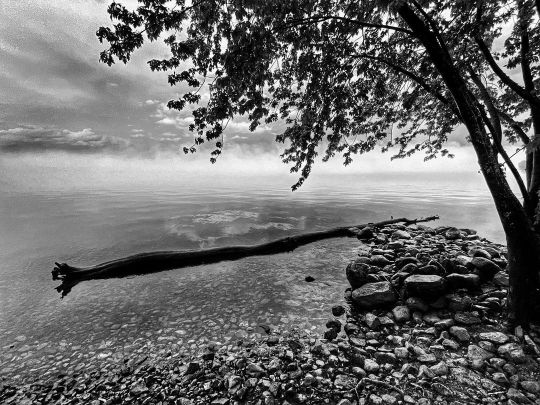
“He chooses; he synthesizes; in short, he has ceased to be the chronicler; he has become an artist.” — Virginia Woolf (Source: The Art of Biography) #lakechamplain #chronicler #artist #combinatorialcreativity #virginiawoolf #lacchamplain #mistymorning #blackandwhite #bnwmood #igblacknwhite #instabnw #essexnewyork #essexny #upstateny #upstatenewyork (at Essex, New York) https://www.instagram.com/p/Cl_kFy8uSBW/?igshid=NGJjMDIxMWI=
#lakechamplain#chronicler#artist#combinatorialcreativity#virginiawoolf#lacchamplain#mistymorning#blackandwhite#bnwmood#igblacknwhite#instabnw#essexnewyork#essexny#upstateny#upstatenewyork
0 notes
Text
God, Eunie is such a boss. Stares the source of her PTSD in the face, calls him a dumbfuck chauvinistic douchebag, and owns him at his own game. Still traumatized to the point of shaking but turns that fear into pure rage and makes it perfectly clear she is the one in control of this battle.
#xc3#xenoblade chronicles#shes so real#she talks like a proper chav too i love her#like imagine this happening with the chavviest essex voice possible#anyway that alone makes eunie >>>>> pyra and mythra who usually cave at the first obstacle
42 notes
·
View notes
Photo
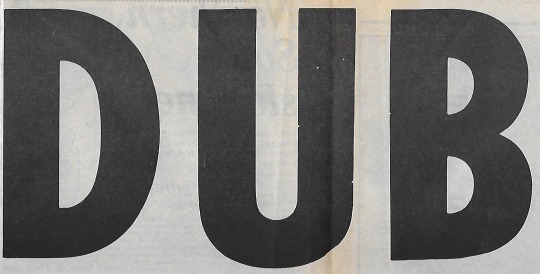
One of history’s best music lists -- better than Pitchfork’s, Rolling Stone’s, or Elvis Costello’s -- was made by a teenager named Snoopy in the summer of 1977. In the London music newspaper Black Echoes, he published his 125 favorite albums from the golden age of dub reggae. Forty-four years later, thanks to a lucky break, I found him.
Snoopy, born Paul Nagle, is a hero three times over. First, he vividly chronicled under-documented and mysterious music, producing the closest thing I know to a kind of Leonard Maltin Guide to the history of dub. Second, when I reached out, he was willing to respond to a stranger: "Hi,” he said. “My friend told me you were interested in getting in contact with me.” The third reason is that he answered my series of questions about his life, the list, and its beautiful music with the same kind of warmth and expertise that makes his writing so valuable.
His memories of late-70s reggae record shops, radio stations, zines and newspapers, and the adventures, fights, and relationships that came along with them, make for one of the best accounts I’ve ever heard of the dub reggae scene, especially the version that migrated from Jamaica to England at the height of King Tubby, Lee “Scratch” Perry, Dub Specialist, the Revolutionaries, the Aggrovators, Augustus Pablo, Yabby You, Joe Gibbs, Keith Hudson, Sonia Pottinger, 4th Street Orchestra, Lloyd Coxsone, Rupie Edwards, Derrick Harriott, Skin, Flesh & Bones, Tommy McCook, and Duke Reid. Inspired by Snoopy’s list, I made a compilation of about 81 hours of dub, which you can listen to right here. Here’s what he told me: Who’s Snoopy? Paul Nagle is the name I was born with. I was born in Islington, London, in April 1959, and moved with my family to the new town of Basildon, in Essex, in 1964. In 1969, when I was ten, a friend of mine’s sister recommended and lent me a book of American cartoon strips called For the Love of Peanuts. I immediately fell in love with the Peanuts gang, in particular Charlie Brown’s dog. A few years later, I became penpals with a girl from my old school called Marianne. She was in her sister’s band, had a stage name, and used to sign off her letters to me using it. I was quite jealous, so I adopted Snoopy as my pseudonym. When I was sixteen, I wrote a letter to a weekly rock paper called New Musical Express congratulating them on their recent coverage of reggae, which i was fanatical about at the time. I didn’t want to use my own name, so i signed the letter Snoopy.
It was printed as their letter of the week on their Gasbag page. There was a note at the end of my letter which asked that I contact the features editor, whose name was Neil Spencer. I did so and he invited me to start writing about reggae for them on a freelance basis. Snoopy became my nom de plume, and the nickname has stuck with me for the rest of my life. Most people, apart from my family, know me as Snoopy. Of course, people often get the name wrong: I have been called Spooky, Snotty, Snooty, Snooky, Sleepy, Noddy and countless other derivatives.
How did you learn about dub reggae? My generous dad gave me his copy of Rockers Meet King Tubby in a Firehouse. I was nuts about records and music from a very early age. My parents had a great record collection and I could place 45s and 78s in their generic company sleeves before I could even read. By the time I was four years old I was obsessed with playing singles. In fact, the oldest living example of my handwriting, actually a scribble, is on a Tony Bennett single my dad bought in 1963 – it was also my first experience of entering a shop that sold records. My mum came from a large family and my parents and aunts and uncles were always throwing parties. My cousins had amazing records, too, and had quite eclectic tastes. So apart from the usual pop stuff, I was also hearing jazz and soul and folk and funk and reggae and country. My first musical obsession, apart from the Beatles, of course, was the Tamla Motown record label. I adored The Supremes, The Temptations, The Four Tops, The Miracles. All of them!
I was introduced to reggae by my cousin Steve around 1968. His influence on my musical directions was massive. He was an avid soul collector, too. In 1973, we moved back to London, and during the following year I got the reggae bug. I was still at school. I was spending all of my pocket money on records. I used to frequent chapel market, just around the corner from where I was born, and listen to the reggae records, because, of course, it wasn’t getting any airplay on the radio. That changed, in 1975, with the introduction of a Saturday night show called TV on Reggae, which was on a relatively new London-based station called capital. The DJ was Tommy Vance, who wasn’t a reggae buff but a good DJ. He’d have various reggae sidekicks who knew their stuff visit the show. I used to always record the show on cassette tape – and one week there was a whole hour dedicated towards dub. This one show completely blew my mind. I had heard and owned b-side dubs and versions, but it was the first time I’d heard tracks taken from dub albums. I didn’t have a clue what most of the records were, because it was an uninterrupted session. No information was given about the chosen tracks, but it made things all the more exciting trying to find out what they all were over the next few years.

What was Black Echoes, and how did you end up publishing the list? In January 1976, a new weekly Black music newspaper was published in the UK, which featured soul, reggae, jazz and blues. I was 16 and had recently started my first job, an office junior for the institute of accounting in Bedford Square in London’s West End. A ten minute walk led to a reggae record shop in Hanway Street, the first ever in that part of London. It was called Daddy Kool. This became my lunchtime hangout, and even after work and on Saturdays. I would spend nearly all my wages on records. A few doors away was a soul record shop called Contempo that I also frequented. Dave Hendley worked in there, who went on to write the reggae column for Blues & Soul magazine and take some of the greatest photographs ever of reggae artists. Steve Barrow was my go-to at Daddy Kool for tracking me down tunes. He wrote the reggae singles reviews for Black Echoes.
When I did a couple of record reviews for New Musical Express, I was introduced to Penny Reel, whose writing on reggae I had come across in the reggae fanzine Pressure Drop. He introduced me to Black Echoes’ editor, Peter Harvey, who asked if I wanted to write for the paper. I was sixteen at the time and so I was up for it, even though I had no journalistic experience. I started to do album reviews and eventually did news stories and articles, live gig reviews, interviews and took over reviewing the reggae singles when Steve Barrow left. I quickly became a fixture at Black Echoes and was the baby of the family. My ambition was to write a few articles on one of my favourite genres of music, and it the first time there had been any kind of substantial listing released worldwide of dub albums. Did you have help? The content of the list was mainly researched and compiled by myself, but Penny Reel and others also helped with information about albums. Of course, in those days, there were no computers. It was a lot of legwork, traipsing around London to specialist record shops and record stalls in markets and trying to find those elusive dub albums. At that time, not many were being released in the UK, so it was mainly expensive Jamaican imports that I tried to track down, to listen to -- even if not to buy. A lot of the research was really about rummaging about in specialist record shops, junk shops, mail-order lists, record company advertisements, record reviews and my own record collection and those of other fans. Gradually the list of albums grew bigger and it seemed to come together, though it was often difficult to verify things. Of course, it didn’t help that I was on a deadline for publication. There were a few errors made as a consequence, but not that many.

Can you describe what makes dub so magical? For me, it's the mix of the improvisation of jazz, folk music's local tradition, and gospel's holiness. But it's hard to describe, isn't it? I think what initially fascinated me the most about dub was its fluidity and immediacy. Dub mixes are one-off attempts at recreating something new out of something previously recorded.
There is definitely something akin to jazz about dub, I suppose because mixing has that improvised feel to it, things can go either very right or very wrong. The unexpected twists and turns a dub track can take is very much like the unimaginable flights of fancy taken by Charlie Parker, John Coltrane, Jimmy Smith or even Jon Hendricks. I think the other-worldliness of dub is what makes it really magical. So many of the sounds are unlike any you’ve ever heard, at least in those early days of dub. there is also an affinity with disco which I was also heavily into during the late 70s, when producers and engineers like Shep Pettibone, Walter Gibbons, Larry Levan and the incredible Tom Moulton were laying down the foundations of dance music and experimenting with mixing in a new and vibrant way.
The heavyweight combustion between the sound of the crashing drums and the booming bass was also something that particularly appealed, and the use of echoed-vocals has always been something that has really made me sit up and listen.
I loved that Bunny Lee flying-cymbal sound. The crisp channel one rockers sound was something that as a young person I found really exciting. Lee Perry’s more technically experimental sound was perfect for dub and Augustus Pablo’s mellow, more mystical sound was so brilliant. There was some magical dub in the years after 1977. Do you have favorites? A few spring to mind. I loved Gussie’s Black Foundation Dub, Dennis Brown’s Umoja Dub, Gregory Isaacs’ Slum in Dub, Linval Thompson’s Negrea Love Dub. Nuh Skin Up Dub had some good tracks. Scientist Rids the World of the Evil Curse of the Vampires -- great title, great LP! I also should mention Captain Ganja & the Space Patrol. I came up with the concept and titles for Venture Records. My old school friend Marianne and her husband Steve designed the cover. They also did High Risk Dub and Lovers Dub. There have been some really great compilations as well: Termination Dub, Dub Gone Crazy, Dub Like Dirt, in fact all of those Blood and Fire dub comps are wicked. My old friend Steve Barrow on the case. Do you have any regrets about the list? Things that should have been on or off? I was only 18 at the time. What I got together, considering I’d never researched anything before, was pretty good for the time. I purposefully included albums which weren’t strictly dub albums, for example, instrumental albums and albums with both vocal and dub tracks. I think I did that because those radio dub specials also featured vocal tracks, it’s not something I would do now. However, if you excluded vocal tracks, then that would wipe super ape, which has killer dubs and vocals.
It would have been nice to include release dates on the list, but at that time there was pretty much no way of knowing what first appeared when. This is mainly because Jamaican record companies rarely put the year of release on a record. Even now, a site like Discogs is filled with errors on its inclusion of Jamaican dub albums, where contributors are just having a stab in the dark.
I would definitely have African Dub Chapter Three in the Top 10. It was listed 115 in the list! At the time, hardly anybody had heard it, and shops in the UK certainly couldn’t get hold of it. It didn’t enter the black echoes UK reggae LPs chart as an import until October 1977, nearly three months after I’d compiled the list, when sufficient copies started entering the country. Within four weeks, it was the no. 1 album, and remained on the charts as a Jamaican import for an amazing 35 weeks. The opening track chapter three was a sound-system steppers tune favourite that has lit reggae dance floors pretty much ever since.
With regards to my original top 20, I think it’s pretty good. I still love most of those albums. their order I would maybe juggle around, I think either King Tubby Meets the Rockers Uptown or King Tubby Meets the Aggrovators at Dub Station, or even Pick a Dub would deserve to be at the top spot. Later I realized dub station was a UK issue of the Jamaican release Creation of Dub with different titles, the latter appearing at 41 on the list. That turned out to be a bit of an issue. It was impossible to know whether a UK release was a new one or a Jamaican one under a different title, for example Ja-gan was also known as Morris on Dub.
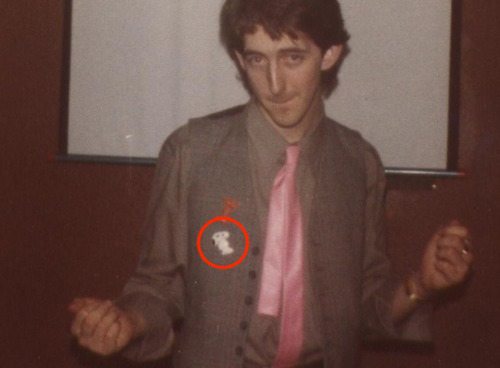
Who are the producers you return to over and over? For me, it's Scratch, King Tubby, the Dub Specialist series -- and, post-1977, the wonderful Scientist. I am still a huge fan of Bunny Lee’s productions. He was ridiculously prolific, of course, but I rather liked that. In 1975, he must have issued around 40 singles by Johnny Clarke alone. I loved that 1974-76 period of his music.
I can always return quite happily to listen to Lee Perry productions as well. He was always so inventive and creative and groundbreaking, really. He most definitely was a true artist in the artistic sense of the word, pushing music beyond its boundaries to create sounds that were truly unusual and magnificent. An innovator. I first heard Blackboard Jungle round Steve Barrow’s place in 1976, and it blew me away. Revolution Dub is still a classic for me. I love that it features snippets from a popular British TV comedy of the time, Doctor on the Go. The dub of Jimmy Riley’s version of Bobby Womack’s Woman’s Gotta Have It is exceptional, too.
I think Niney the Observer is an often overlooked producer. Dubbing with the Observer and Sledge Hammer Dub remain real favourites of mine. What has the response to your list been like over the years? After 1977, the list was pretty much forgotten, and things remained that way for decades. I was proud of it at the time, but never considered it to be anything more than an opportunity for me to compile and rate the dub music I loved. I certainly never thought of it, or looked at it. It never occurred to me that anyone would read it ever again.
The advent of the world wide web changed all that. I think it was during the early 2000s when I first became aware that scans of the list were starting to appear. Frankly, I was astonished. The websites that featured it were mainly music forums and reggae sites. Obviously the list came in for some criticism regarding the positioning of some of the records. African Dub Chapter Three was a particular bone of contention, with detractors saying I didn’t know what the hell I was talking about, as I had it so far down the list. And no one agreed with my choice of King Tubby Meets the Upsetter at the Grass Roots of Dub as the no. 1 album. But it was the first dub album I bought when I was 16, and so it meant something special to me. Hindsight is a tremendous but dangerous thing.
But the positivity about the list far outweighed the negativity. Lots of people have expressed their pleasure in reading it, so I am well chuffed about that. Sly Dunbar put the list on his Facebook page fairly recently. He played on a lot of those albums! it has also been a joy to discover and read other people’s dub lists, and I thoroughly enjoyed Martin ‘Sky Juice’ Blomqvist’s recent book 100 Days of Dub. He’s so knowledgeable and his enthusiasm is infectious. I've been able to find almost all of the records, but there are some entries that confuse me: King Tubby's Vengeance, Prophets Bootleg Dub, ABC Dub, Sir Collins in Session, Ja Man in Dub, and Aquarius Dub 2. You’re right, Aquarius Dub 2 doesn’t seem to exist. it could be that it was planned and shelved, as a few on the list might have been forthcoming releases that were never issued in the end. And there were quite a few Vivian Jackson albums about at the time with similar titles, which could be confusing. What have you been doing these last few decades? I’m always dabbling one way or another. Whilst working for reggae record companies back in the 70s I got involved with singing and made a few recordings. I became lifelong friends with British lovers rock group Natural Mystic, so have sung and arranged backing vocals on quite a few of their records down the decades. For the past 25 years or so I have been working with young people on films, concerts, recordings, dance projects, self-development and community productions. My writing necessarily diverged into creating scripts and composing lyrics. And for many years I have been researching and compiling a book I’m calling Celebrate Good Times: 20th Century Soul, Reggae and Dance Music, which analyses 24 years of charts. It is a real labour of love: there are over 5000! I’ve also been writing a novel these past couple of years, which I’m finding challenging but quite rewarding.

Could you pick one single song, the greatest dub of all time? It is a fight between two records: King Tubby Meets the Rockers Uptown by Augustus Pablo and the flipside of I Admire You by Larry Marshall, King Tubby’s immense Watergate Rock. Either would be contenders for the greatest dub of all time. I love them equally. On my millionth read of the list I noticed this: “Snoopy has decided to extend his survey of dub into a six part series.” The whole series was entitled The Story of Dub. the people at Black Echoes were pretty amazing. They really encouraged and indulged me. The first part was published in July 1977, and was written in collaboration with my mentor, Penny Reel. He was pivotal in developing my writing and expanding my general viewing of life itself. We wrote The Roots of Dub together, and it was his influence and incredible writing that made that opening salvo so special. The list came next: Rubbin’ the Dub. The third part, More Rubbin’ the Dub, focussed on dub versions on 45. Dub Fix 50 included imports, basically just favourites of mine from my own record collection. I also invited other writers such as Chris Lane, a true pioneer in writing about reggae, Hendley, who also provided me with great photos, and Penny posing as Scotty Bennett, to submit a list of their top three dub 45s and single favourite dub album. In part four, The Routes of Dub, I wrote about 12-inch singles and provided readers with an opportunity to commission their own mixes for dub plates from Silver Camel, who remixed records; Step Forward Youth was all about young sound systems. And in mid-August was Dub Conclusion/Confusion, the end to the series. The whole thing was fun to write. But the list was my favourite part, as I love a list.
-Max Abelson
#Reggae#dub#dub reggae#Snoopy#interviews#pitchfork#rolling stone#paul nagle#black echoes#leonard malton#lee scratch perry#dub specialist#penny reel#the roots of dub#roubbin the dub#more rubbin the dub#dub fix 50#chris labrooy#scott bennett#the routes of dub#step forward youth#keith hudson#the revolutionaries#the aggrovators#augustus pablo#yabby you#joe gibbs#sonia pottinger#4th street orchestra#lloyd coxsone
110 notes
·
View notes
Text
⚓Boat Media Bracket⚓

Round 1 Pairings:
Return of the Obra Dinn (video game, 2018) vs Sea of Thieves (video game, 2018)
Captain Blood (movie, 1935) vs Two Years Before the Mast (book, 1840)
Battleship (movie, 2012) vs Under Enemy Colors (book, 2007)
Jacky Faber Chronicles (books, 2002-2014) vs The Unbinding of Mary Reade (book, 2018)
Jason and the Argonauts (movie, 1963) vs The Sea-Wolf (book, 1904)
Pan (movie, 2015) vs Swallows and Amazons (books, 1930-1947)
Der fliegende Holländer (opera, 1843) vs Three Men in a Boat (To Say Nothing of the Dog) (book, 1889)
The Adventures of Tintin (movie, 2012) vs Lake Placid (movies, 1999-2018)
Ghost Ship (movie, 2002) vs The Wind in the Willows (book, 1908)
Narrative of the Most Extraordinary and Distressing Shipwreck of the Whale-Ship Essex (book, 1821) vs The Mermaid, the Witch, and the Sea (book, 2020)
Railsea (book, 2012) vs Skies of Arcadia (video game, 2000)
Captain Ron (movie, 1992) vs Trysor Y Morladron (book, 1960)
A True Story (book, 2nd century CE) vs Voyage of the Basset (book, 1996)
I'm on a Boat (music video, 2008) vs The Voyage of the Beagle (book, 1839)
Just Roll With It: Riptide (podcast, 2021-) vs The Sea Hawk (book & movie, 1915 & 1924)
Pirates Dinner Adventure (live show, 2010-) vs Spiritfarer (video game, 2020)
Captains Courageous (book, 1897) vs The True Confessions of Charlotte Doyle (book, 1990)
Assassin’s Creed IV: Black Flag (video game, 2013) vs World of Warships (video game, 2015)
Going to Weather (webcomic, 2022) vs The Whale (movie, 2013)
Mr Midshipman Easy (book, 1836) vs Anaconda (movies, 1997-2009)
Round 2 pairings:
The Odyssey vs Sea of Thieves
Captain Blood vs Under Enemy Colors
The Poseidon Adventure vs The Unbinding of Mary Reade
The Sea-Wolf vs Mutiny on the Bounty
Rime of the Ancient Mariner vs Swallows and Amazons
Three Men in a Boat vs The Adventures of Tintin
The Ship of Theseus vs The Wind in the Willows
Narrative of the Most Extraordinary and Distressing Shipwreck of the Whale-Ship Essex vs Jaws
One Piece vs Railsea
Trysor Y Morladron vs The Voyage of the Basset
The Cruel Sea vs I'm on a Boat
The Sea Hawk vs Montague Siblings Series
The Sea Beast vs Spiritfarer
The True Confessions of Charlotte Doyle vs Assassin's Creed: Black Flag
The Iliad vs Going to Weather
Mr Midshipman Easy vs The Voyage of the Dawn Treader
Round 3 Pairings:
The Odyssey vs Captain Blood
The Unbinding of Mary Reade vs The Sea-Wolf
Rime of the Ancient Mariner vs The Adventures of Tintin
The Ship of Theseus vs Narrative of the Most Extraordinary and Distressing Shipwreck of the Whale-Ship Essex
One Piece vs Voyage of the Basset
I'm on a Boat vs The Sea Hawk vs Montague Siblings Series
Spiritfarer vs Assassin's Creed: Black Flag
Going to Weather vs The Voyage of the Dawn Treader
Quarterfinals Pairings:
The Odyssey vs The Sea-Wolf
The Rime of the Ancient Mariner vs The Ship of Theseus
One Piece vs I'm on a Boat
Spiritfarer vs Going to Weather
Semifinals Pairings:
The Odyssey vs the Rime of the Ancient Mariner
One Piece vs Going to Weather
Finals Pairings:
The Odyssey vs Going to Weather
Congratulations to The Odyssey!
#bmt2 info#ok tell me if i made any mistakes here on dates or medias#im not as familiar with this set so any feedback is encouraged!#also there will be more introduced in round 2#i know it might be hard to read but there are just. so many#which is also why i'm using a different bracket format i'm sorry if its ugly lol#the old site i was using wouldn't let me use more than 30 lol#long post#bmt2 round 1
14 notes
·
View notes
Note
Hi, I was wondering what exactly was people's reaction to Richard III crowning himself King? I've seen some people say that the majority of the country was relieved/accepting but that is ... certainly not what I read? From what I understand, everything happened so quickly that most people were initially very confused and thus didn't instantly react, but once things became obvious, Richard III faced quite a bit of opposition - proved by the sudden execution of Hastings, the way people were said to weep when the topic of the disposed Edward V was brought up, the rebellions, and the newly substantial support Henry VII received. But perhaps I misunderstood, so what do you think?
Hi anon, sorry for the late reply! Richard III's ascension is complicated and it's impossible to know how things transpired in terms of percentage/numbers, but he was indeed met with considerable opposition. In London, as you pointed out, there seems to have been considerable confusion at the time of his ascension. There was a palpable atmosphere of intimidation as Richard arranged for 5-6 thousand armed men (the rumours circulating at the time said 20,000) to come into the capital. He also declared a night-time curfew controlled by a watch carefully appointed to survey the city. The executions of Hastings, Rivers (Anthony Woodville), Thomas Vaughan, Richard Grey and the imprisonment of the Bishop of Ely (John Morton) and the Archbishop of York (Thomas Rotherham) would have remained fresh in people’s minds. The chroniclers paint a picture of a London waiting to see what would happen and acquiescing to the strongest (de facto) leader.
Richard did not only display force: he also made many grants to old members of Edward IV’s household and retained them in their positions so they could remain loyal. Despite his offerings of reconciliation, the Croyland Chronicle continuator commented that after his coronation people began ‘to murmur greatly’, ‘especially those people who, because of fear, were scattered throughout franchises and sanctuaries’. Mancini recorded that ‘already there was a suspicion that [Edward V] had been done away with’. The Great Chronicle reported that ‘men feared not openly to say that [the princes] were rid out of this world’. A rebellion broke out in London less than a month after his coronation when men started fires across the city in hopes that the Tower garrison would rush out to deal with the flames and the princes would be rescued.
After the rescue plan failed, many, many, many other risings took place. The majority of the rebels were former servants of Edward IV, and the more important of them had held senior positions in his household. At the end of August, Richard appointed Buckingham (so far his right-hand man) to investigate and judge treasons and felonies in London, Surrey, Sussex, Kent, Middlesex, Oxfordshire, Berkshire, Essex and Hertfordshire. At the start of October, risings broke out in Kent, followed by Exeter, Guildford, London, Newbury, Salisbury, Wiltshire, Cornwall and more. There was also a failed attempt at insurrection in Wales led by Richard’s own right-hand man, the Duke of Buckingham. However, it’s also important to note that Richard was well-received in the cities he visited during his progress into the north of England.
A. J. Pollard has drawn attention to the fact that regional prejudices and feuds, notably north vs south, played very important roles during certain phases of the Wars of the Roses and in the period following Richard III’s and Henry VII’s ascensions that regional difference only became starker. Richard had been king in the north in all but name. The south, on the other hand, regarded Richard III with suspicion, especially following the risings of October 1483 after which Richard placed his own men in the positions of power which had so far been occupied by the people that had revolted against him. The main act of attainder that was passed following the risings punished ninety-eight (98) men, the largest number ever attainted at one time, and those weren’t even the total number of people who were punished or pardoned. The continuator of the Croyland Chronicle remarked:
What great numbers of estates and inheritances were amassed in the king’s treasury in consequence! He distributed all these amongst his northerners whom he planted in every part of his dominions, to the shame of all the southern people who murmured ceaselessly and longed more each day for the return of their old lords in place of the tyranny of the present ones.
It’s important to mention that Richard didn’t only place northerners in the south: other trusted servants coming from the west midlands and East Anglia were also deployed. But Croyland allows us a glimpse into the mentality of an author writing in the southeast of England. ‘The tyranny in mind was not so much the actual behaviour of the new ‘lords’, says Pollard, ‘but the transgression of the fundamental notion that the local communities should be ruled by their own native elites’. Richard the malignant tyrant is not so much Tudor propaganda as it is the product of metropolitan, south-eastern authors compiling their accounts. So at his time and ever since then, there remains two Richards of tradition: the noble duke and king whose death was lamented by the city of York (the northern Richard), and the usurping infanticide and tyrant (the southern Richard).
To go back, things might have calmed down after the risings, and Richard III certainly did everything in his power to act like a generous ruler to those standing by his side, yet more and more people kept defacting to Henry Tudor. Anywhere between 400 and 500 Englishmen sought Henry in Brittany—no other exile or pretender to the crown after the conquest ever received that amount of active national support in exile, to talk nothing about the amount of support he received in Wales. The garrison of a Calais fortress also entirely defected to Henry’s side, which was especially worrying to Richard III since Calais was a city that could be so easily accessed from France and used as a jumping point to England. People who had been pardoned in early 1484 such as William Brandon and William Berkeley kept rebelling, and even men from Richard III’s own household started to abandon him, such as his keeper of the wardrobe, Piers Curteis, who fled to sanctuary at Westminster in 1485.
It’s interesting that, for all their international backing, the number of Englishmen that accompanied Perkin Warbeck and Lambert Simnel & John de la Pole remained minimal and never rose as high as those who joined Henry Tudor. The Lambert Simnel rebellion received substantial Irish support but not many northerners could be roused to join Edward of Warwick’s cause against Henry VII—the city of York itself, who had so lamented Richard III’s death, stood with the new Tudor king. When Perkin tried to raise rebellion, only Cornwall followed suit and that was after the region had revolted against taxation; when Warbeck tried to rouse Kent, a region notorious for rebelling against previous kings of England (Henry VI, Edward IV, Richard III all faced Kentish rebellions), the locals fought Warbeck and his men without even calling for the king’s help.
The amount of opposition that Richard III encountered was not normal nor minimal. In the end, he could not rule with only half of his kingdom’s support, and this unevenness in support explains much about the quickness with which he was toppled from the throne, I believe. Sorry for rambling (and for the wait!), but this is what comes to mind. Thank you for reaching out and I hope this answer is of help! 🌹x
38 notes
·
View notes